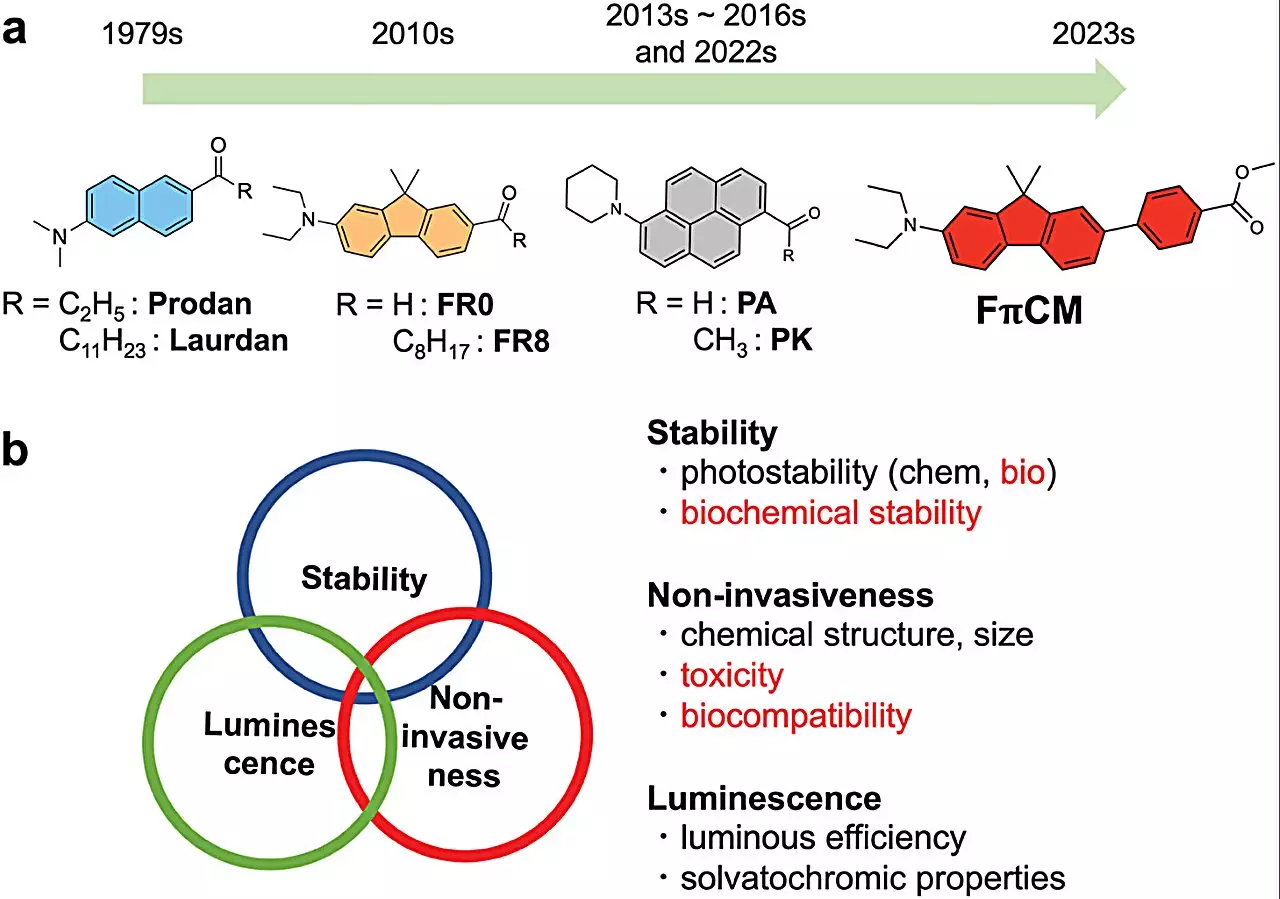Cell biology has long been fascinated by the intricate relationship between lipid membrane fluidity and various cellular functions. Lipid membranes are not merely static barriers, but rather dynamic structures that play crucial roles in processes such as cell division, material exchange, and sensory perception. Understanding the order and fluidity of lipid membranes is therefore essential for unraveling the complexities of cellular biology and pathology.
Traditionally, scientists have relied on solvatochromic probes or dyes to visualize lipid membrane fluidity. These probes emit light of varying colors depending on the polarity of the surrounding environment, allowing researchers to monitor changes in lipid membrane order. However, conventional solvatochromic dyes have faced limitations such as low stability, weak fluorescence, and potential toxicity to cells. Additionally, the reliance on ultraviolet light for excitation has restricted the applicability of these probes in live cell imaging.
A research team from Tokyo Institute of Technology and Kyushu University set out to address these challenges by developing a novel solvatochromic dye with enhanced stability, fluorescence, and biocompatibility. Led by Associate Professor Gen-ichi Konishi and Professor Junichi Ikenouchi, the team designed a probe with a unique molecular structure that optimized intramolecular charge transfers, leading to superior solvatochromic and fluorescent properties.
The final version of the probe, named 2-N,N-diethylamino-7-(4-methoxycarbonylphenyl)-9,9-dimethylfluorene (FπCM), exhibited exceptional fluorescent properties and chemical stability in various environments, including living cells. Unlike traditional solvatochromic dyes, FπCM demonstrated long-term photostability, allowing for prolonged imaging without signal degradation. The researchers were able to observe real-time changes in lipid membrane order during cell division, highlighting the non-toxic nature and versatility of the proposed probe.
The development of FπCM opens up new possibilities for studying membrane dynamics and cellular functions with unprecedented precision. By targeting specific lipid membranes, such as those in organelles like mitochondria and the endoplasmic reticulum, researchers can explore the interplay between membrane fluidity and protein activation in response to different stimuli. This innovative probe paves the way for a deeper understanding of membrane biology and its implications for various diseases and physiological processes.
The groundbreaking work by the research team in Japan represents a significant advancement in the field of solvatochromic probes and lipid membrane imaging. The development of FπCM offers researchers a powerful tool for visualizing real-time changes in lipid membrane order, shedding light on the intricate mechanisms that underlie cellular functions. The future holds great promise for the application of this novel probe in unraveling the mysteries of membrane biology and advancing our knowledge of cellular dynamics.


Leave a Reply